5. Hell or High Water
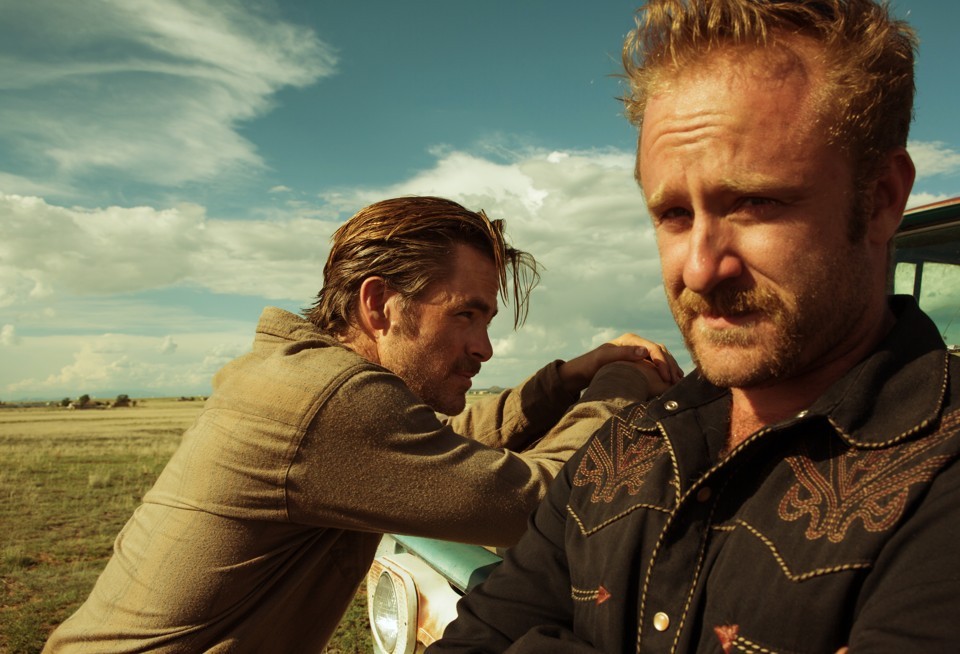
Taylor Sheridan has become one of the foremost writers of modern western tales with Sicario, Wind River, and Yellowstone, but his greatest achievement to date has been the stunning neo-western Hell or High Water. The film does more than lift western tropes into a modern era, as it explores a world in which traditional roles of cops and criminals aren’t the same, and all are victims of a corrupt system that preys on those with less power. With gorgeous direction from David Mackenzie, Hell or High Water features many iconic shots that capture the scope and beauty of small towns taken over by oppressive banks.
Brothers Toby (Chris Pine) and Tanner (Ben Foster) embark on a mission to pay off the land owned by their recently deceased mother, and their motivations couldn’t be more different; Toby is trying to find a way to provide for his estranged family, and Tanner is in it for the exhilaration of danger. The entertaining brotherly relationship is beautifully contrasted with that of two cops on their trail; Marcus Hamilton (Jeff Bridges) and Alberto Parker (Gil Birmingham) find solace in each other’s company and humor. It’s the rare western where all four lead characters can generate sympathy.
4. The Hateful Eight
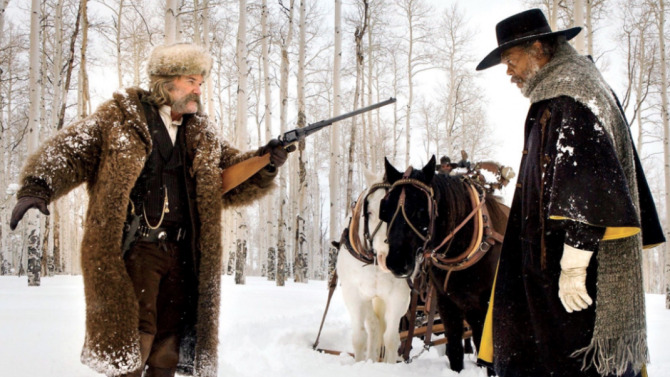
Quentin Tarantino is renowned as one of the world’s biggest cinephiles, someone who considers a rich history of cinematic references in every one of his films. The Hateful Eight is perhaps his most referential film, a loving tribute to classic westerns. The presentation was everything for The Hateful Eight, as it was screened on 70mm film projectors, complete with a score from the legendary Ennio Morricone and intermission. It’s clear that Tarantino cares about preserving this specific moment in film history and introducing it to a new audience.
Beyond its presentation, The Hateful Eight is gorgeously photographed by Robert Richardson, who captures iconic images of a snowy, isolated cabin, and its claustrophobic interior. The recreation of a 19th Century stagecoach stop is incredibly detailed in its use of historical artifacts, and the formal beauty makes for a sharp contrast to the foul-mouthed characters and the story’s eventual dark turn.
3. True Grit
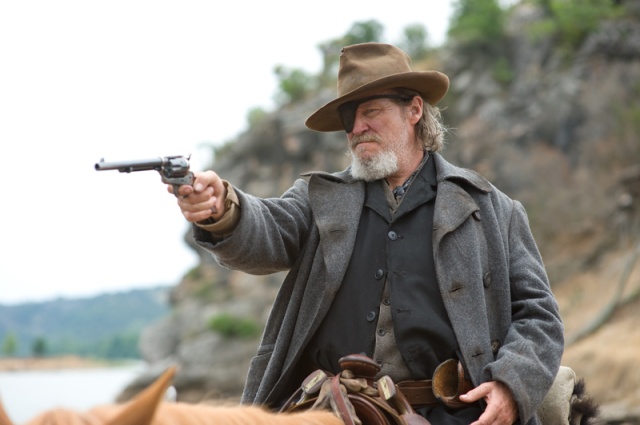
1969’s True Grit was a solid film that featured one of John Wayne’s last great performances, but the 2010 remake from the Coen Brothers was superior in every way, as it added a richness to every character. The relationship between veteran lawman Rooster Cogburn (Jeff Bridges) and his young employer Mattie Ross (Hailee Steinfeld) pops with even more energy, particularly as they encounter the quirky Texas Ranger LaBoeuf (Matt Damon) and the dastardly villain Tom Chaney (Josh Brolin).
The Coen Brothers have developed a very unique relationship with Roger Deakins, and once again Deakins proves that he is one of the greatest cinematographers to ever live; the film’s action is visceral and shocking, and the entire film is keen to show what the western world is like from a child’s eyes. It’s as richly funny as any of the Coens’ best work, yet retains all the heart and emotion from the original source material.
2. The Revenant
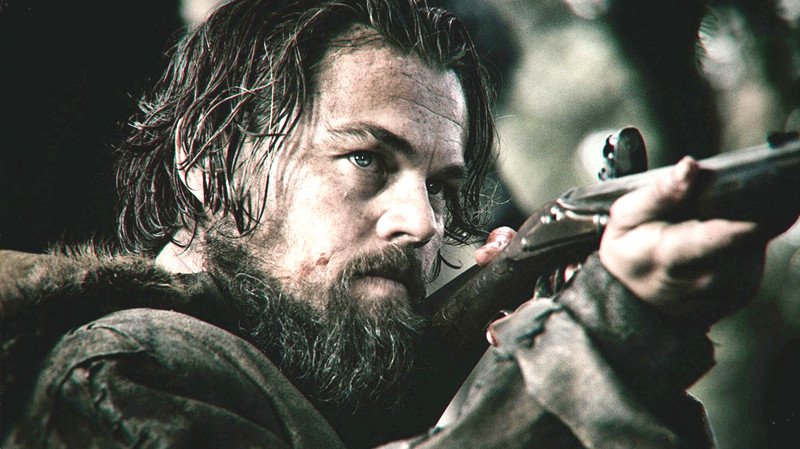
An unmissable saga of revenge and survival, The Revenant is one of the most visually striking films of the 21st Century. The incredible cinematography by Emmanuel Lubezki is a perfect match for Alejandro Inarritu’s gripping revenge story, which pits Hugh Glass (Leonardo DiCaprio) on a perilous journey to track down John Fitzgerald (Tom Hardy), the man who killed his son. It’s a simple story elevated by the grim color pallet and attention to detail, led by DiCaprio’s transfixing physical transformation.
The film forces DiCaprio to be as vulnerable as possible as he utilizes his skills to survive, and throughout his desolate journey, there are rare moments of beauty captured, particularly when it comes to the depiction of the Native American culture that has been trampled on. Perhaps the film’s strongest scene is where Glass receives a haunting vision of his dead son; the wordless sequence personifies the film’s emotional weight in just a few short moments. It’s hard to think of a film this long that is this gripping throughout, and much of that is due to its visual beauty.
1. The Ballad of Buster Scruggs
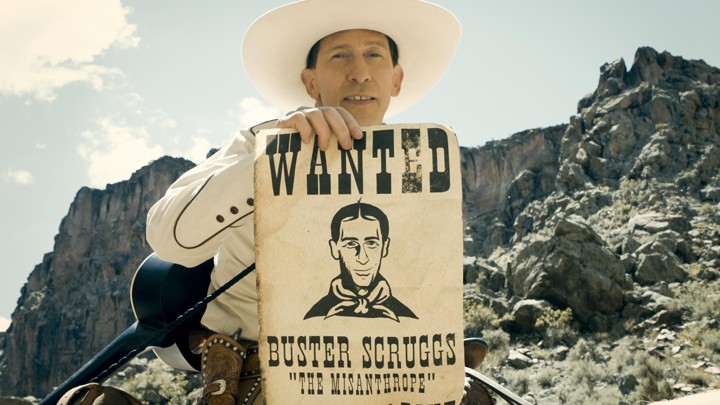
A staggering artistic achievement, The Ballad of Buster Scruggs is a perfect embodiment of the unique cinematic perspective of the Coen brothers. The film’s six separate anthology tales each revolve in death in some way, and although the stories of a singing bounty hunter, failed bank robber, aging performance artist, struggling prospector, innocent traveler, and peculiar stagecoach riders all vary drastically in tone and feel, they are all united in their shared mortality. Some of these stories are touching, some are uplifting, and some are sad, but each reflects a different window into the beauty of seeing something that wasn’t meant to last.
The Coens are unafraid to mix genres, including fantasy elements and exciting musical numbers into the story. Cinematographer Bruno Delbonnel has a vivid eye for eye popping color; while some segments like “The Ballad of Buster Scruggs” and “All Gold Canyon” feature lush and expansive environments, others like “Meal Ticket” and “The Girl That Got Rattled” are dark and desolate. The result is an immersive and challenging cinematic experience, one that encapsulates the entirety of the western era into six beautiful stories.